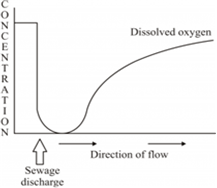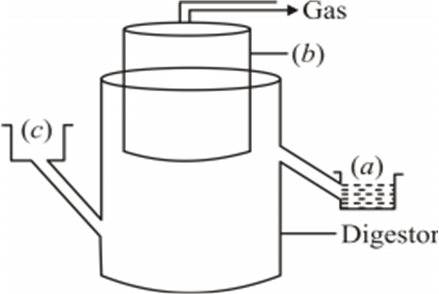 Short Answer Type
Short Answer TypeName the two different categories of microbes naturally occurring in sewage water. Explain their role in cleaning sewage water into usable water.
Bacteria and fungi are two categories of naturally occurring microbes present in sewage. The bacteria along with the fungal mycelia form flocs. These flocs are utilised during the secondary treatment of sewage. The primary effluent after separation of the grit and debris is taken to the secondary treatment. Here, the effluent is passed to an aeration tank where it is constantly agitated and air is pumped into it. This leads to vigorous growth of bacteria and floc formation, the bacteria in these flocs consume of organic matter; thus decreasing the BOD of the sewage.
Study the graph given below. Explain how oxygen concentration is affected in the river when sewage is discharged into it.

The diagram above is that of a typical biogas plant. Explain the seQ uence of events occurring in a biogas plant. Identify a, b and c.
Name a free-living and a symbiotic bacterium that serve as bio-fertilizer. Why are they called so?
